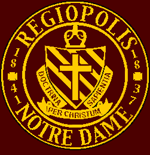The Kingston Memorial Centre is a 3,300-seat multi-purpose arena located at 303 York Street in Kingston, Ontario, Canada. Opened in 1951, the Kingston Community Memorial Health and Recreation Centre was designed as a community sports and entertainment centre that would become a "living memorial" in remembrance of Kingstonians who gave their life in both world wars and the Korean War (Planning Partnership-Hughes Downey Architects 2007, p. 5). The Memorial Centre lands and facilities include a war memorial, a large ice pad in the arena building, a new outdoor aquatic centre, agricultural barns, softball diamonds, a cinder track, off leash dog park and a linear park at the east, north and west perimeter of the property. Just east of the arena building was the International Hockey Hall of Fame (IHHOF) museum building at 277 York St. In July 2012, Kingston City Council approved the relocation of the collection on a short-term basis to the Invista Centre on Gardiners Road in Kingston. The existing building was found to have costly repair issues related to moisture penetration. It was demolished after the IHHOF moved to the Invista Centre in Kingston's west end.The Memorial Centre land has been publicly owned since it was acquired in 1841 by the British Government. Its cultural significance reflects local Kingston agricultural, military and recreational history (Planning Partnership-Hughes Downey Architects 2007, p. 4).
As the Memorial Centre building aged consideration was given by the City of Kingston for ways to rehabilitate the property. In 1993 Parkin Consultants Limited issued a Final Report on the possible uses of the property based primarily on 1980s data. In 1987, the Kingston Canadians junior hockey club was the main tenant with 60% of the facilities events. Entertainment programing accounted for 12% and trade or consumer shows 24% of events. In 1987 there were $774,862 in ticket sales, facility rentals and other income. But operating costs were $1,093,473. The Parkin report noted that the deficit of $318,311 could be reduced with decreased through measures to reduce maintenance and energy costs and by increasing rent, ticket sales, and canteen revenues.The Memorial Centre was the home to the Kingston Frontenacs ice hockey team and its predecessors, the Kingston Canadians and Kingston Raiders from 1973–2008. It was also home to the Kingston Frontenacs of the Eastern Professional Hockey League from 1959-1963. When a new downtown arena, the Leon's Centre opened in 2008, the Frontenacs moved to the new facility, playing their last game at the Memorial Centre on February 15, 2008.The Kingston Memorial Centre is the site of the annual Kingston Fall Fair operated by the Kingston and District Agricultural Society. Established in Kingston in 1830 as the Midland Fair and revived in 1912, the Kingston Fall Fair is held over four days each September. It is the second oldest Fair in Ontario, with attendance over 16,000. The society sponsors the Fair with the objective of promoting education through agriculture. The fair includes the largest dairy show held in Ontario.Since the 1950s the Memorial Centre has been used for many cultural and recreational events including performances by Johnny Cash in 1958 and 1987. Kingston's The Tragically Hip played the centre in 1995 In 2010 it become the home of Kingston Derby Girls, Kingston's first official women's roller derby league.After 2008, the Memorial Centre became the permanent home of the Queen's Golden Gaels (Queen’s varsity hockey), figure skating, and Queen’s intramural ice sports. It replaced the Jock Harty Arena which had been demolished to allow for the construction of new athletic facilities at Queen's University. The Church Athletic League of Kingston hockey teams are based at the centre.







